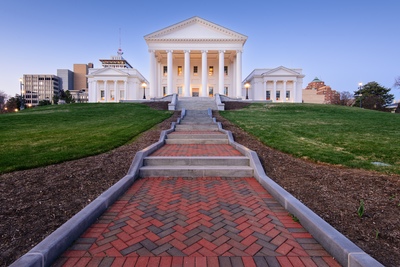
State Government Affairs, Elections & Campaigns
How Lieutenant Governors Are Selected (And Why It Matters)
December 10, 2025 | Bill Kramer
May 9, 2023 | Bill Kramer

Key Takeaways:
After the November elections, we highlighted how there are more states under one-party control than at any other time in modern history. But after party switchers handed the GOP two additional legislative supermajorities early this year, the number of states where one party does not have a clear path to enact their preferred policies is down to only six states. If we look ahead at the handful of state elections later in 2023, the situation could end up even more divided as we enter the presidential election season.
A state government “trifecta” occurs when a political party controls both chambers of the legislature as well as the governor’s mansion. Last year, Democrats gained a net of 3 trifectas after the November elections. InMassachusetts and Maryland they earned trifectas after gubernatorial victories, and they scored another two by flipping the Michigan Legislature and Minnesota Senate. However, Democrats lost a trifecta in Nevada with a gubernatorial defeat, while Republicans lost their trifecta in Arizona by losing the governor’s mansion. Before the election, 13 states had “divided governments” where a single political party did not control both the governorship and both chambers of the legislature. But after the election, that number dropped to only 11 states with the remaining 39 states under single-party "trifecta" control.

If we factor in veto-proof supermajorities in state legislatures where the governor is of a different party, then the number of states where one party has a clear path to enacting its preferred public policies grows even starker. At the start of the year, lawmakers in Vermont, Kansas, and Kentucky all had the numbers to override vetoes from their opposite-party governors. But later this year, in a surprising twist, key members of the Louisiana and North Carolina legislatures (elected as Democrats) switched political affiliation to Republicans, giving the GOP the numbers for supermajorities in both states and the ability to override vetoes from Louisiana Gov. John Bel Edwards (D) and North Carolina Gov. Roy Cooper (D). If we subtract these five veto-proof supermajority states, we’re down to only six “divided government” states.
We’re seeing this play out in the policy space as lawmakers enact new laws on opposite sides of high-profile controversial issues such as gender and firearms. But perhaps the most divisive issue of the moment — abortion issues — highlights the advantages along with the limits of single-party control. While North Carolina is making headlines after the new supermajority fast-tracked a 12-week abortion ban through the legislature last week with the numbers to override an expected gubernatorial veto, earlier this month large Republican majorities in Nebraska and South Carolina saw efforts to enact new restrictions on abortion access in those states falter after Republican members failed to agree on compromise policies. While there’s a clear path in 44 states for members of a single party to enact their policy preferences, it’s not always an easy path.
And remember it’s an election year for the handful of states with odd-year elections. Depending on the outcome of the November elections, it wouldn’t be surprising to see Republicans solidify trifectas by flipping gubernatorial seats in Kentucky and Louisiana as well as gaining a trifecta in Virginia by flipping the state Senate. This would increase the record number of trifectas heading into the 2024 presidential election year.
For more timely insights like this, be sure to sign up for our Morning MultiState weekly morning tipsheet. We created Morning MultiState with state government affairs professionals in mind — sign up to receive the latest from our experts in your inbox every Tuesday morning. Click here to read past issues and sign up.

December 10, 2025 | Bill Kramer
-238a17-400px.jpg)
December 10, 2025 | Bill Kramer

November 5, 2025 | Bill Kramer